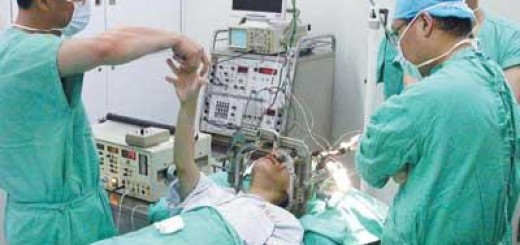神经干细胞(neuralstemcell,NSCs)是一类具有分裂潜能和自更新能力的母细胞,它可以通过不对等的分裂方式产生神经组织的各类细胞。患病部位组织损伤后释放各种趋化因子,可以吸引神经干细胞聚集到损伤部位,并在局部微环境的作用下分化为不同种类的细胞,修复及补充损伤的神经细胞。因此,神经干细胞具有广泛的治疗价值,可以用于各炎症或损伤导致的大脑神经细胞丧失(例如,老年痴呆、脑梗死后遗症、多发性硬化等)。
重庆医科大学的研究发现:人参达玛烷皂苷Rg1具有强烈的激发神经干细胞的活性,并且进一步确认了其活性机制。这项研究发表在2013年第16期《中国中药杂志》。
研究摘要:
目的:利用基因芯片技术筛选出人参达玛烷皂苷Rg1的促进人类神经干细胞(NSCs )主要分子靶点 。
方法:首先, MTT法通过筛选出的达玛烷皂苷Rg1 促进NSC增殖的最佳浓度。然后,在达玛烷皂甙Rg1 – 促进NSC增殖后的第7天,采用基因芯片技术观察靶基因的表达。筛选出最重要的靶基因和信号转导途径,然后进一步数据分析。
结果:在达玛烷皂苷Rg1 促进NSC增殖后的第7天,获得440基因的表达有差异, 266显著上调,和174显著下调。 HES1基因, cAMP(环磷酸腺苷) -PKA (蛋白激酶A)和PI3K (磷脂酰肌醇3激酶) -AKT信号转导途径,与NSC增殖密切相关。
结论:利用基因芯片筛选出的差异表达基因可能提供对人参达玛烷皂苷Rg1 促进神经干细胞增殖的分子机制研究提供新的线索。
[Study on molecular target promoting human neural stem cells of ginsenoside Rg1 by gene chip].
Zhongguo Zhong Yao Za Zhi (中国中药杂志). 2013 Aug;38(16):2701-5
Abstract
OBJECTIVE: To screen out main molecular target promoting human neural stem cells (NSCs) of ginsenoside Rg1 by using the gene chip technology.
METHOD: First, MTT assay was adopted to screen out the optimal concentration of Rg1-promoted NSC proliferation (120 mg x L(-1)). Then, on the 7th day after the Rg1-promoted NSC proliferation, the expression of target genes was observed by the gene chip technology. The most important target gene and signal transduction pathways were screened out through the data calculations.
RESULT: On the 7th day after the Rg1-promoted NSC proliferation, obtained 440 differential genes, 266 significantly upregulated genes and 174 significantly down-regulated genes. HES1 gene, CAMP (cyclic adenosine monophosphate)-PKA (protein kinase A) and PI3K (phosphatidylinositol 3 kinase)-AKT signal transduction pathways were closely related to the NSC proliferation.
CONCLUSION: The differentially expressed genes screened out by gene chip may provide new clues for studies on molecular mechanism of ginsenoside Rg1-promoted NSCs proliferation.
















































